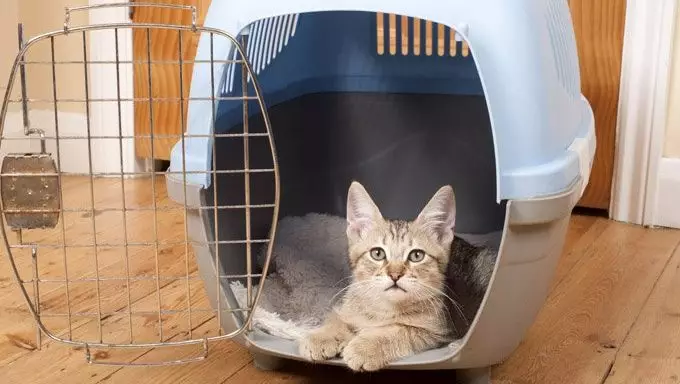Cats are creatures of habit and comfort, often finding solace in tight, enclosed spaces like boxes. Paradoxically, when it comes to cat carriers, many felines show a distinct aversion. This dysfunctionality arises primarily from the negative associations cats develop with these carriers. For many cats, the looming presence of a carrier signals an impending visit to the vet—a place filled with unfamiliar smells, sounds, and experiences that can be quite distressing. This association can send an owner’s anxiety skyrocketing, creating an uncomfortable cycle. Picture the scene: a frustrated owner with scratches adorning their arms, actively wrestling their beloved feline into the carrier. It’s a scenario played out in countless households, and it begs the question—why should getting a cat into their carrier be such an adversarial affair?
Understanding Your Feline’s Psychology
Before embarking on any journey with a feline companion, comprehension of their unique psychology is indispensable. Cats are astute observers and are often tuned in to their owner’s emotional frequency. If an owner approaches the carrier with heightened trepidation, their cat will undoubtedly sense this tension, heightening their refusal to cooperate. The first strategy toward ameliorating this discord is to foster an environment of calmness. Before even attempting to get your cat into the carrier, take a moment to practice deep breathing and collection of thoughts. Remember: your cat can easily pick up on your stress, complicating your attempts further.
Moreover, preparation is key in making the carrier a less intimidating presence. Instead of waiting until the last moment, make the carrier a familiar item in your home. Begin by placing it in a comfortable area with the door open, allowing your cat to explore it at their leisure. Infusing the carrier with familiar scents (like their favorite blanket or a well-loved toy) will help mitigate the carrier’s daunting aura, transforming it from a means of confinement into a potential safe haven.
Effective Techniques for Entrancing Your Kitty
Once your cat has become accustomed to the carrier’s presence, it’s time to focus on the actual process of getting them inside. There are two primary techniques to consider for coaxing your feline into the carrier: the head-first and hip-first methods. The head-first approach involves gently guiding your cat with one hand around their shoulders while supporting their hips with the other. It’s important to ease them in slowly and carefully to avoid agitating an already anxious creature.
Alternatively, for cats that strongly resist entering the carrier, the hip-first method may yield better results. By tipping the carrier on its end, you can create a more inviting angle for cat entry. Supporting their chest as you gently guide their hips inside can convert a stressful moment into a smoother transition. A crucial reminder during this process is to close the door gently but swiftly—no one wants a cat that suddenly bolts after dodging a misguided hand.
For particularly wiggly or fearful cats, consider wrapping them in a towel as a method of restraint. Think of this as a comforting embrace; it can offer them a sense of security while being transferred into the carrier.
Smart Travel Solutions for Pet Owners
Once you’ve successfully secured your cat in their carrier, it’s vital to maintain that tranquility even during travel. Many cat owners make the mistake of allowing their feline to roam freely in the car out of sympathy. However, this approach can lead to accidents, escape, or even dangerous distractions while driving. The best practice is to keep your cat confined to the carrier until the vehicle has reached its destination.
Investing in a high-quality cat carrier can significantly reduce anxiety for both owner and feline. Consider products with innovative designs—top-loading crates, for example, allow for easy access without forcing the cat through a small opening. Carriers that integrate safety features, such as seatbelt attachments, can bring peace of mind while traveling, allowing owners to focus on the journey ahead rather than worrying about a wayward cat.
The evolution of the marketplace has brought forth an array of options that blend comfort and practicality, so it’s worth exploring before settling on an outdated plastic version. This investment can drastically change both the traveling experience and your long-term relationship with your furry companion.
In navigating the world of feline travel, understanding and preparation are paramount. By arming yourself with the right techniques and tools, you can transform the proverbial wrestling match into a harmonious bonding experience that both you and your cat will appreciate.
